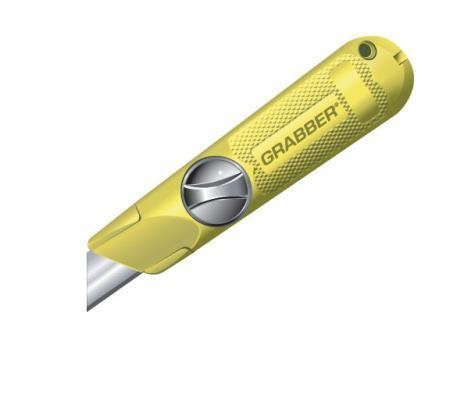Combining Preference Theory and CAPM Efficient Frontier Palisade Corporation
Post on: 4 Июнь, 2015 No Comment

Combining Preference Theory
Towards an Optimum Portfolio of Upstream Projects
Regis da Rocha Motta, UFRJ, regis@prolink.com.br
Guilherme Marques Caloba, UFRJ, caloba@marlin.com.br
Ciro Jorge Appi, Petrobras/CENPES
Alan Bello Moreira, UFRJ
Summary
The goal of this article is to present the relationship between numerical optimization tools applied to investments and preference theory, using utility risk-aversion functions, in the determination of optimum portfolio for the upstream sector. Some articles have already been published in Brazilian and international magazines and congresses. This article, however goes a little beyond the previous ones.
The petroleum industry is very singular on the economy, featuring huge uncertainties associated to the return on investment. In an environment like this, it is natural to search for tools that may identify and reduce risks. Given the extensive amount of capital invested in a block for its exploration, appraisal and possible development, risk analysis finds, in this field, very extensive use.
Further on this article, the Capital Asset Pricing Model (CAPM) and risk analysis techniques are going to be introduced, discussing a case applied to the petroleum exploration industry. The main feature of this article is the integration between CAPM and Risk Analysis through the Preference Theory, using utility functions and the certainty equivalent concept.
Introduction: CAPM and its Use
The CAPM Model was developed by Harry Markowitz in 1962, and was responsible for his winning the Nobel Prize some years later. Based on the natural equilibrium between risk and return of any given investment, Markowitz structured a theory for asset precification.
Markowitzs work is actually more extensive than what is going to be presented here. CAPMs main idea, the efficient portfolio frontier is what is going to be presented.
In any project or investment where uncertainties are involved, the return is given by the average of the net present value or the internal rate of return that is calculated by means of a number of iterations large enough to approach the average result to the expected value of the investment or project.
Risk is considered to be the dispersion of the results of the measure of return. Mostly, the standard deviation is used, assuming that the distribution of data is possibly understood as a normal or lognormal.
It is a natural fact that increasing returns also mean bigger risks. Markowitz’s model illustrates this very well, with the efficient frontier of portfolios.
Working with a given number of projects, and using some restrictions, such as capital available to be applied in this portfolio, it is possible to build up the efficient frontier.
A linear or non-linear optimizer is an essential component for the solution of these problems. In this case the optimizer works through the steep-descent method, that is, modifying the parameters in the opposite direction of the growth of the error function.
Some characteristics of the petroleum industry were involved in this problem. In this sector, as well as others of the same importance, companies often make up Joint Ventures to accomplish a project.
Given a maximum risk that a company is willing to take, the objective function is to maximize the return given this restriction of maximum capital to be invested. The optimization is made by changing the level of participation in each project (from 0%to 100%).
The following steps are necessary for the composition of the efficient frontier:
Determine the smaller risk given a minimum investment and its associated return;
Calculate the maximum risk associated to the portfolio;
Calculate the maximum return for the levels of risk between the minimum and maximum (calculated on the previous steps);
Connecting the points through a smoothed curve, the efficient frontier is plotted.
Supposing only two projects in the portfolio, the formulas below are verified:
Practical Example of the CAPM
Suppose a investor has the four following options, projects A, B, C and D, as investment options which have this characteristics (development costs, return and risk are given in millions of US$ dollars):
Suppose also that this company may invest up to 400 million dollars and the minimum budget allowance for these projects is 20 million dollars.
Following the steps mentioned previously, the risk-return relation might be optimized.
The efficient frontier is shown on the following graph, with the indication of risk and return for the four projects individually.
Note that increasing the minimum risk level, the return also increases. The frontier reflects optimum relations between risk and return. The following table presents the results for optimization in each point, as well as the participation levels in each option:
Note in the table that, as the risk increases, project D tends to be abandoned and projects B and C tend to increase participation up to 100%.
The CAPM method is extremely handy in the portfolio selection. One should note that, in order to each the risk and return numbers for each project, generally an extensive risk analysis must be made previously.
In the upstream sector, for instance, the items to be analyzed should be geological risks, exploration, appraisal and development phases, uncertainties connected to the Recoverable Oil Volume, production curves, pricing, etc. Through Monte Carlo Simulation, one can easily obtain the afore mentioned results in a complete cash flow analysis.
Note that the frontier doesn’t feature a single point as the optimum, but rather a trade-off between risk and return. Introducing the Preference Theory, it is possible to reach an optimum point for a firm given the projects. This will be seen in the next section.
Utility Function, Certainty Equivalent and CAPM
The use of utility functions in the petroleum industry is not something new. The attitude of the upstream sector, as well as other sectors that allocate the same amount of capital is a
risk averse one, that is, to say, the bigger the risks, the smaller the additional value perceived by the decision-maker. On the other hand, new technology companies tend to be risk prone.

One easy way to measure this relationship is the so-called utility function. Those functions tend to follow the basic shape shown in the picture below:
In picture 3 above, U(X) means the utility of the investment and EV(X) is the expected value of the same investment, supposing the risk (standard deviation) is proportional.
Derived from the utility function is the idea of the certainty equivalent, which is the amount the decision-make would pay for the risky investment. Maximizing this certainty equivalent means maximizing the value of the investment for the decision-maker. The risk averse investor is expected to have certainty equivalents that are less than the expected value of the business evaluated.
It is a common practice to use exponential utility functions for the certainty equivalent following this formula:
The value R is particular to every company, being a fraction of the estimated assets of the firm. Using this value, the certainty equivalent can be calculated for any investment. Lower risk tolerance means preference to lower risk businesses. Given that the risk tolerance is known, it is possible to calculate the best capital allocation for a portfolio.
When multiple projects are being considered the following simplification can be done:
Using the above formula for different values of R, various optimum certainty equivalents are achieved. Once the risk tolerance is determined, the problem of portfolio selection turns out to be a simple maximization problem. Next section returns to the previous example.
Continuing the Example
On the previous example, the efficient frontier was plotted considering the four-project portfolio. Now the goal of the optimization is to maximize the certainty equivalent by changing the participation levels in the four projects.
The following table shows, for different risk tolerances, the risk and return reached, as well as the participation levels on the four projects, and the capital allocation in the portfolio.
Beyond the risk tolerance of US$100 Million, a sill point is reached. No longer can be added risk or return on this portfolio. Only the smallest risk tolerance, 5 million dollars, doesn’t use all the amount of capital available. In the following graph, the efficient frontier, the four projects and the portfolio selections for R varying from 5 to 100 million dollars are shown.
All the points that maximize certainty equivalents lie in the efficient frontier. This is not a sine qua non condition. Note that, despite all the risks, the risk tolerance corresponding to the minimum investment is in an intermediate region of the curve. Should the investor be guided only by the frontier itself, the investment would be much smaller, being more than conservative for his/her risk tolerance, incurring in the loss of approximately 250 million dollars (expected value). Note, in the graph, the difference between the return of the point that maximizes the certainty equivalent for a risk tolerance of US$5 million and the transparent circle that represents this level of risk on the frontier.
The connection between the preference theory and the efficient frontier for a portfolio through Markowitz’s CAPM shows itself very useful, leading to an optimum investment decision. The decision-maker sees the different efficient possibilities of investment and selects the optimum one, by maximizing the certainty equivalent.
Conclusions and Recommendations for Further Studies
This article has verified the importance and potential of the integration between the CAPM and the Preference Theory. A practical example was extensively explored, as an analogy to projects in the upstream petroleum industry. The risk assessment and management are chief topics for any company operating in this field.
One of the next steps in risk management for petroleum is the development of a fully integrated decision support system for the petroleum sector, based on geological and economic data, consisting in a database and a simulation program, giving the investor a better comparison between prospects, and being helpful for the decision individually (each prospect) or for a portfolio of investments. Models such as this tend to evolve with post mortem analysis, becoming better decision tools. Another area of interest in further research is the context decisions, involving games and training for managers and consultants.
For more information, contact:














